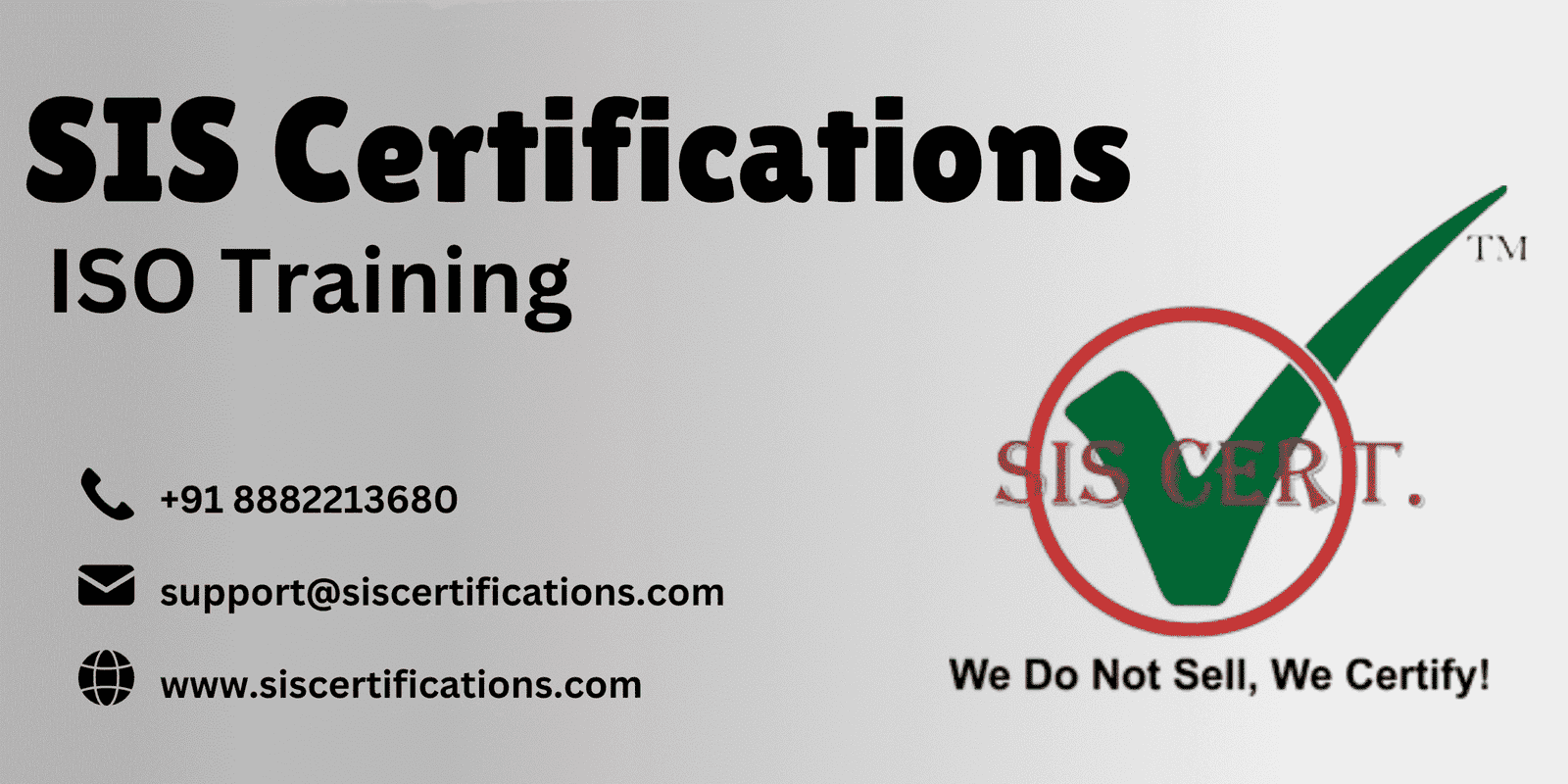Overview of ISO Training
ISO Training is a structured educational process designed to equip individuals and organizations with the knowledge and skills needed to implement, maintain, and improve International Organization for Standardization (ISO) standards. These standards, developed by the ISO, are globally recognized frameworks that ensure quality, safety, efficiency, and consistency across various industries. ISO Training covers a wide range of standards, including ISO 9001 (Quality Management), ISO 14001 (Environmental Management), ISO 27001 (Information Security), and many others, each tailored to specific operational needs.
ISO Training is essential for organizations aiming to achieve certification, enhance operational performance, or comply with regulatory requirements. It provides participants with an in-depth understanding of ISO standards, their applications, and best practices for implementation. Training programs are offered in various formats, including online courses, in-person workshops, and blended learning, catering to diverse needs and schedules. Whether you’re a business owner, quality manager, or employee, ISO Training empowers you to align processes with international benchmarks, fostering credibility and competitiveness.
The primary goal of ISO Training is to bridge the gap between theoretical knowledge and practical application. Participants learn how to interpret ISO standards, conduct internal audits, manage documentation, and drive continual improvement. By investing in ISO Training, organizations can ensure their teams are well-prepared to meet certification requirements and sustain long-term compliance.
Advantages of ISO Training
ISO Training offers numerous advantages that benefit both individuals and organizations. Here are some key advantages:
- Enhanced Knowledge and Expertise: ISO Training provides participants with a deep understanding of specific ISO standards, enabling them to implement and manage systems effectively. This expertise enhances professional credibility and career growth opportunities.
- Improved Organizational Performance: Trained employees can streamline processes, reduce inefficiencies, and ensure compliance with ISO standards, leading to improved productivity and customer satisfaction.
- Global Recognition: ISO Training aligns organizations with internationally recognized standards, boosting their reputation and credibility in the global market. This is particularly valuable for businesses seeking to expand or collaborate with international partners.
- Risk Mitigation: ISO Training equips teams with the tools to identify and address risks, such as non-compliance, operational errors, or security breaches, reducing potential financial and reputational losses.
- Competitive Advantage: Organizations with ISO-trained staff are better positioned to compete in industries where compliance and quality are critical differentiators. Certification can also be a deciding factor for clients choosing service providers.
- Employee Empowerment: ISO Training fosters a culture of continuous improvement, empowering employees to take ownership of their roles and contribute to organizational goals.
By investing in ISO Training, organizations can unlock these advantages, positioning themselves as industry leaders committed to quality and excellence.
ISO Training Requirements
The requirements for ISO Training vary depending on the specific standard, the organization’s goals, and the roles of participants. However, some common requirements apply across most ISO Training programs:
- Basic Understanding of ISO Standards: While no formal prerequisites are typically required for introductory courses, a basic understanding of the relevant ISO standard (e.g., ISO 9001, ISO 14001) is beneficial. Some advanced courses may require prior knowledge or experience.
- Organizational Commitment: For organizations pursuing certification, commitment from leadership is essential. This includes allocating resources, defining roles, and establishing a clear implementation plan.
- Role-Specific Training: Different roles require tailored training. For example, internal auditors need specialized ISO Training to conduct audits, while managers may focus on leadership and implementation strategies.
- Access to Training Materials: Participants typically need access to training materials, such as manuals, templates, or software tools, to support learning and practical application.
- Certification Goals: Organizations must identify which ISO standard they aim to achieve certification for, as this determines the scope and content of the training. For instance, ISO 27001 training focuses on information security, while ISO 45001 emphasizes occupational health and safety.
- Time and Availability: ISO Training programs vary in duration, from one-day workshops to multi-week courses. Participants must allocate sufficient time to complete the training and apply their knowledge.
- Assessment and Certification: Many ISO Training programs include assessments, such as exams or practical exercises, to evaluate competency. Successful completion often leads to a certificate, which may be required for organizational certification.
Meeting these requirements ensures that participants and organizations are well-prepared to achieve the desired outcomes from ISO Training.
ISO Training Benefits
ISO Training delivers tangible benefits that contribute to organizational success and individual growth. Here are some key benefits:
- Compliance with Standards: ISO Training ensures that organizations meet the requirements of specific ISO standards, paving the way for successful certification audits.
- Improved Efficiency: By learning best practices, participants can optimize processes, reduce waste, and enhance operational efficiency, leading to cost savings.
- Enhanced Customer Trust: ISO certification, supported by trained staff, signals a commitment to quality, increasing customer confidence and loyalty.
- Better Decision-Making: ISO Training equips individuals with data-driven approaches to problem-solving, enabling informed decision-making at all levels.
- Global Market Access: Certified organizations with trained personnel can access new markets and attract clients who prioritize ISO compliance.
- Employee Development: ISO Training enhances employees’ skills and knowledge, boosting morale and career prospects. It also fosters a culture of accountability and excellence.
- Sustainability and Innovation: Training in standards like ISO 14001 promotes sustainable practices, while ISO 9001 encourages innovation through continuous improvement.
These benefits make ISO Training a strategic investment for organizations seeking long-term growth and competitiveness.
ISO Training Process
The ISO Training process is structured to ensure participants gain both theoretical knowledge and practical skills. Below is a step-by-step overview of the typical ISO Training process:
- Needs Assessment: The process begins with identifying the organization’s goals, such as achieving certification or improving processes. This helps determine the appropriate ISO standard and training program.
- Selecting a Training Provider: Organizations or individuals choose a reputable training provider offering accredited ISO Training courses. Providers may offer online, in-person, or hybrid formats.
- Course Enrollment: Participants enroll in a course tailored to their needs, such as foundation courses, lead auditor training, or implementation workshops. Courses vary in duration and complexity based on the standard and participant roles.
- Learning Phase: During the training, participants study the ISO standard’s requirements, principles, and applications. Training often includes case studies, group discussions, and practical exercises to reinforce learning.
- Practical Application: Participants apply their knowledge through activities like mock audits, process mapping, or documentation exercises. This hands-on approach ensures they can implement ISO standards effectively.
- Assessment and Certification: Most ISO Training programs include assessments, such as written exams or practical evaluations. Successful participants receive a certificate, which may be required for organizational certification.
- Implementation and Follow-Up: After training, participants apply their skills to implement or maintain ISO standards within their organization. Ongoing support, such as refresher courses or audits, ensures sustained compliance.
- Continuous Improvement: ISO Training emphasizes the importance of continual improvement. Participants learn to monitor performance, address non-conformities, and adapt to changing requirements.
By following this process, organizations and individuals can maximize the value of ISO Training and achieve their quality and compliance objectives.
FAQs
1. What is ISO Training?
ISO Training is an educational program that teaches individuals and organizations how to implement, manage, and audit ISO standards, such as ISO 9001, ISO 14001, or ISO 27001, to achieve certification and improve performance.
2. Who should attend ISO Training?
ISO Training is suitable for business owners, quality managers, auditors, employees, and anyone involved in implementing or maintaining ISO standards within an organization.
3. How long does ISO Training take?
The duration varies depending on the course. Foundation courses may take 1–2 days, while lead auditor training can last 5 days or more. Online courses offer flexible scheduling.
4. Is ISO Training mandatory for certification?
While not always mandatory, ISO Training is highly recommended to ensure successful implementation and certification. Some standards require trained personnel for audits.
5. Can ISO Training be done online?
Yes, many providers offer online ISO Training, which is convenient for participants with busy schedules. Online courses often include interactive modules and virtual assessments.
6. What is the cost of ISO Training?
Costs vary based on the provider, course type, and delivery format. For detailed pricing, check with accredited training providers.
7. How often should ISO Training be updated?
Refresher training is recommended every few years or when ISO standards are updated to ensure ongoing compliance and knowledge.
Conclusion
ISO Training is a vital tool for organizations and individuals seeking to achieve excellence, compliance, and competitiveness in today’s global market. By equipping participants with the knowledge and skills to implement ISO standards, training programs pave the way for improved efficiency, customer trust, and sustainable growth. From understanding the requirements to applying best practices, ISO Training empowers teams to meet certification goals and drive continuous improvement. Whether you’re aiming for ISO 9001, ISO 14001, or another standard, investing in ISO Training is a strategic step toward long-term success. Explore accredited training programs today to unlock the full potential of ISO standards for your organization.







